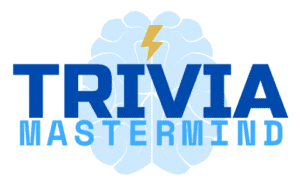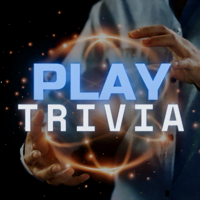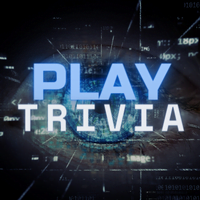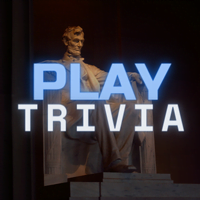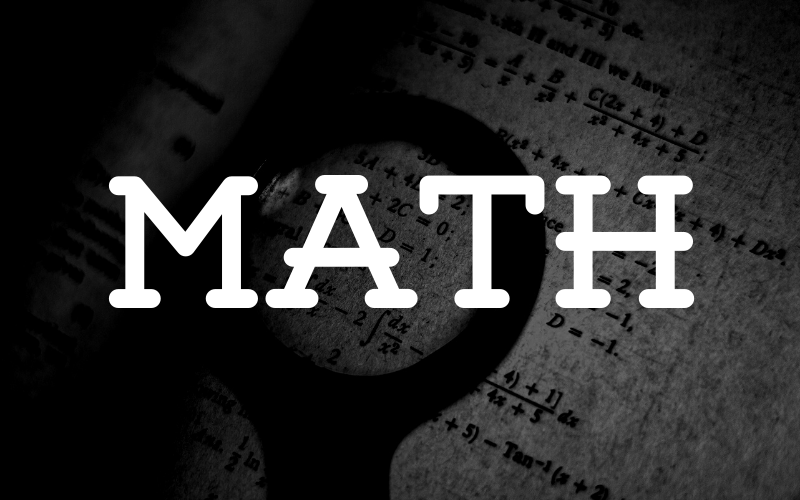
The subject of math is immensely varied, making it great for trivia. Below you will find over 251 advanced Math trivia questions and answers covering many fields and areas of math. These trivia questions provide quite the range in difficulty and only true math lovers will be able to handle these questions.
With many areas of focus and a high degree of difficulty, these 251 Advanced Math trivia questions and answers cover topics only a deep lover of math will appreciate. Use these trivia questions to challenge yourself and others, especially anyone that says, “they know everything about math.”
Contents
| 251 Advanced Math Topics Trivia Questions & Answers 1.1 Play 251 Advanced Math Topics Trivia Questions Quiz 1.2 Read 251 Advanced Math Topics Trivia Questions & Answers Advanced Math Topics Trivia Questions & Answers by Category 1.3 Algebra Math Trivia Questions & Answers 1.4 Arithmetic & Miscellaneous Math Trivia Questions & Answers 1.5 The Branches of Math Trivia Questions & Answers 1.6 Calculus Math Trivia Questions & Answers 1.7 Geometry Math Trivia Questions & Answers 1.8 Important Mathematicians in History Trivia Questions & Answers 1.9 Math Fun Facts Trivia Questions & Answers 2.0 Math Symbols Trivia Questions & Answers 2.1 Theorems of Math Trivia Questions & Answers Related Content 2.2 Play Science Trivia 2.3 Play Computer & Technology Trivia 2.4 Play Video Game Trivia 2.5 Play American History Trivia 2.6 Play Random Trivia |
Play 251 Advanced Math Topics Trivia Questions Quiz
Read 251 Advanced Math Topics Trivia Questions & Answers
The following 251 math trivia questions cover the more advanced topics of mathematics. These questions include theorems, math symbols, integral mathematicians of the field, calculus, and other difficult topics. Use them for highly challenging questions, especially with your math savvy friends.
Algebra Math Trivia
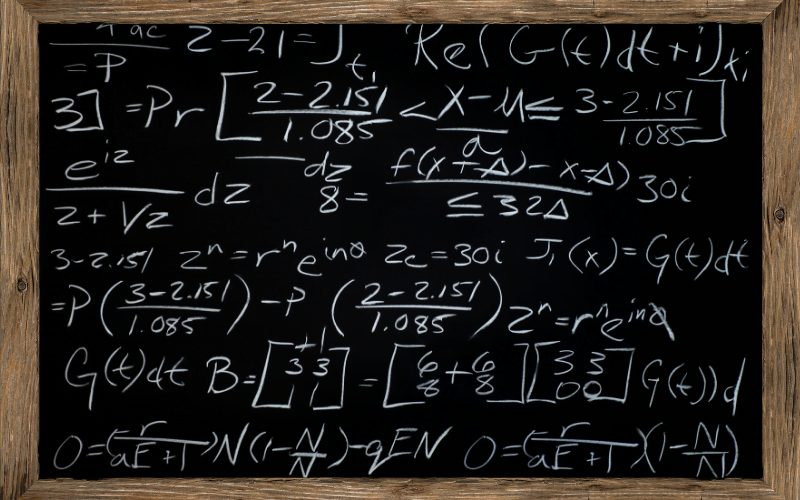
Algebra is the branch of mathematics that deals with symbols and the rules for manipulating those symbols. It uses variables to represent numbers in equations and expressions, allowing us to solve problems by finding values for the variables. Algebra is fundamental to all areas of mathematics, as well as many other fields such as physics, engineering, economics, and computer science.
For algebra trivia facts, read on for algebra trivia questions and answers.
Algebra Math Trivia Questions & Answers
1. What is the name of this formula, typically used in applications? ln n! = n ln n – n + 0(ln n)
Stirling’s Formula
2. In group theory, G ≀ H denotes what, of the groups G and H?
The Wreath Product
3. In mathematics, what is the term for the fundamental algebraic structure where addition, subtraction, multiplication, and division are defined and behave as the corresponding operations on rational and real numbers do?
A Field
4. In mathematics, what is a multiplicative factor in some term of a polynomial, a series, or any expression, which is usually a number, but may be any expression, including variables such as a, b and c?
A Coefficient
5. What kind of real number cannot be written as a simple fraction?
An Irrational Number
6. What kind of number in mathematics, is a number that is not algebraic, i.e. not the root of a non-zero polynomial with rational coefficients?
A Transcendental Number
7. In mathematics, what is a set S which is the set of all subsets of S, including the empty set and S itself called?
The Power Set
8. What is the algebraic structure that is a set equipped with two binary operations satisfying properties analogous to those of addition and multiplication of integers?
A Ring
9. What kind number is a number that can be expressed as the ratio of two integers?
A Rational Number
10. What kind of number is the square root of 2?
An Irrational Number
11. What is the name for a symmetrical plane curve that forms when a cone intersects with a plane parallel to its side, with an example being, a u-shaped graph of a quadratic function?
The Parabola
12. In mathematics, what is an expression consisting of variables and coefficients, that involves only the operations of addition, subtraction, multiplication, and non-negative integer exponentiation of variables called?
A Polynomial
13. What kind of equation is an equation that equates a quartic polynomial to zero, of the general form ax⁴ + bx³ + cx² + dx + e = 0 where a ≠ 0 ?
A Quartic Equation
14. In ring theory, what is the name of a ring that is a special subset of its elements, generalizes certain subsets of the integers, such as the even numbers or the multiples of 3, addition and subtraction of even numbers preserves evenness, and multiplying an even number by any other integer results in another even number?
An Ideal
15. If changing the order of operands in a binary operation, does not change the result, what is the property of this binary operation?
Commutative
16. In the field of algebra, what is a ring formed from the set of polynomials in one or more variables with coefficients in another ring, often a field called?
A Polynomial Ring
17. In algebra, what is a structure-preserving map between two algebraic structures of the same type such as two groups, two rings, or two vector spaces called?
A Homomorphism
18. What is this equation a general mathematical representation of? ax³ + bx² + cx + d = 0
A Cubic Equation
19. What does the set a ⊂ b mean?
a is a Strict Subset of b
20. What is the process in mathematics of extracting the underlying structures, patterns or properties of a mathematical concept, removing any dependence on real world objects with which it might originally have been connected, and generalizing it so that it has wider applications or matching among other abstract descriptions of equivalent phenomena called?
Abstraction
180 Science Trivia Questions & Answers
Learn science facts from every area of science. Click the play now button to begin.
Arithmetic & Miscellaneous Math Trivia
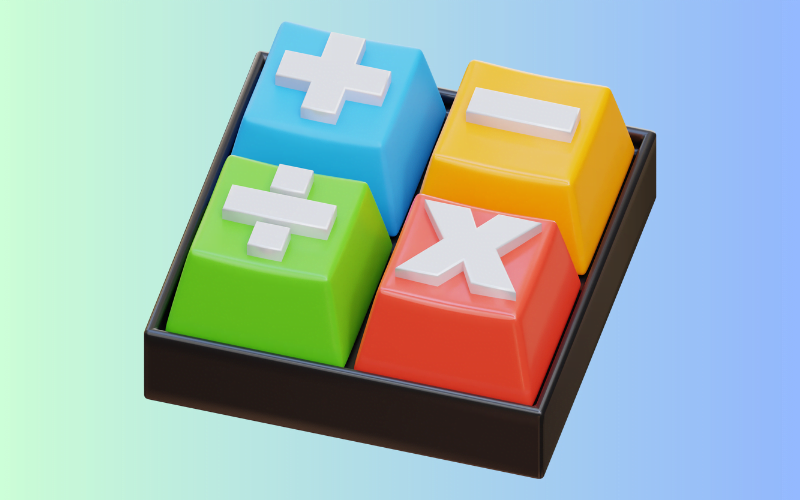
Arithmetic is the branch of mathematics that deals with the manipulation of numbers, including addition, subtraction, multiplication, division, and other operations. It is one of the oldest branches of mathematics, and is fundamental to understanding many areas of mathematics, including calculus and algebra. With the vast fields involved in mathematics, the below questions also include a variety of other areas that encompass many areas of math.
For arithmetic and other more encompassing conceptual facts of math, continue on for arithmetic & miscellaneous math trivia questions and answers.
Arithmetic & Miscellaneous Math Trivia Questions & Answers
21. What is the name of the mathematical model of computation that defines an abstract machine that manipulates symbols on a strip of tape according to a table of rules, and given any computer algorithm, is capable of simulating that algorithm’s logic?
A Turing Machine
22. What is the name of a sequence of numbers such that the difference between the consecutive terms is constant, for example, the sequence 5, 7, 9, 11, 13, 15?
An Arithmetic Progression
23. What is the philosophy of mathematics term that asserts that it is necessary to find a mathematical object to prove that something exists?
Constructivism
24. In probability theory, what is a sequence of random variables for which, at a particular time, the conditional expectation of the next value in the sequence is equal to the present value, regardless of all prior values called?
A Martingale
25. What is the Delian problem more commonly known as?
Doubling the Cube
26. In combinatorial mathematics, what is a permutation of the elements of a set, such that no element appears in its original position and is a permutation that has no fixed points called?
A Derangement
27. In probability theory, what is the name of the paradox which shows that in a set of ? randomly chosen people, some pair of them will have the same birthday?
The Birthday Problem or the Birthday Paradox
28. In arithmetic, what is the term for a quantity produced by the division of two numbers?
A Quotient
29. In group theory, what is the order of a group and the number of elements in its set called?
Its Cardinality
30. What is the mathematical term for the number that sits below the line in a fraction?
The Denominator
31. What is an inferential argument for a mathematical statement, showing that the stated assumptions logically guarantee the conclusion, which may use previously established statements, but every proof can, in principle, be constructed using only certain basic or original assumptions known as axioms, along with the accepted rules of inference?
A Mathematical Proof
32. What branch of mathematical logic studies sets, which informally, are collections of objects?
Set Theory
33. In logic, what is the procedure by which an entire system is generated in accordance with specified rules by logical deduction from certain basic propositions, which in turn are constructed from a few terms taken as primitive called?
Axiomatic Method
34. Which mathematical proof is a technique that is used to prove that a statement P(n) holds for every natural number n = 0, 1, 2, 3, … meaning that the overall statement is a sequence of infinitely many cases?
Mathematical Induction
35. In the mathematical field of topology, what is a continuous function between topological spaces that has a continuous inverse function called?
A Homeomorphism
36. In number theory, what kind of numbers are “almost rational”, and can thus be approximated “quite closely” by sequences of rational numbers?
Liouville Numbers
37. In combinatorics, what is the counting technique which generalizes the familiar method of obtaining the number of elements in the union of two finite sets called?
The Inclusion–Exclusion Principle
38. In mathematics, what is a conclusion or a proposition which is suspected to be true due to preliminary supporting evidence, but for which no proof or disproof has yet been found called?
A Conjecture
39. In number theory, what is the name of a positive integer that is equal to the sum of its positive divisors, excluding the number itself?
The Perfect Number
40. What is the process of extracting the underlying structures, patterns or properties of a mathematical concept, removing any dependence on real world objects with which it might originally have been connected, and generalizing it so that it has wider applications or matching among other abstract descriptions of equivalent phenomena called?
Abstraction
41. What is the mathematical term for the number that sits above the line in a fraction?
A Numerator
42. What is a non-self-evident statement that has been proven to be true, either on the basis of generally accepted statements such as axioms, or on the basis of previously established statements in mathematics called?
A Theorem
43. In arithmetic, what is the process of dividing one integer (the dividend) by another (the divisor), in a way that produces a quotient and a remainder smaller than the divisor?
Euclidean Division or Division with Remainder
44. In mathematics, what is the amount “left over” after performing some computation called?
The Remainder
45. What is a rectangular array or table of numbers, symbols, or expressions, arranged in rows and columns called in mathematics?
A Matrix
231 Computer & Technology Trivia Questions & Answers
Computer & Technology trivia from many areas of computer science. Click the play now button to begin.
The Branches of Math Trivia

Mathematics is an expansive field that can be divided into several branches. Whether it be the study of equations and their solutions, the study of change, the area under curves, shapes and angles, or functions, there are many types of math in existence. Each branch has its own specialized focus and application.
For trivia on the different types of math that exist, keep reading for branches of math trivia questions and answers.
The Branches of Math Trivia Questions & Answers
46. What is the branch of mathematics that investigates the intuitive notion of order using binary relations and provides a formal framework for describing statements such as “this is less than that” or “this precedes that”?
Order Theory
47. What is the mathematical discipline that uses the techniques of differential calculus, integral calculus, linear algebra and multilinear algebra to study problems in geometry, using the theory of plane and space curves and surfaces in the three-dimensional Euclidean space?
Differential Geometry
48. What is the major branch of mathematical logic that represents proofs as formal mathematical objects, facilitating their analysis by mathematical techniques?
Proof Theory
49. Which area of mathematics is primarily concerned with counting, both as a means and an end in obtaining results, certain properties of finite structures, and finding the best structure or solution among several possibilities?
Combinatorics
50. Which branch of mathematics deals with limits and related theories, such as differentiation, integration, measure, infinite series, and analytic functions, and these theories are usually studied in the context of real and complex numbers and functions?
Analysis
51. What is the study of algebraic structures, which includes groups, rings, fields, modules, vector spaces, lattices, and algebras called?
Abstract Algebra or Modern Algebra
52. What is the name of this broad area of mathematics, which is the study of mathematical symbols and the rules for manipulating these symbols and functions is a unifying thread of almost all of mathematics, including everything from elementary equation solving to the study of abstractions such as groups, rings, and fields?
Algebra
53. What is the branch of mathematics, that classically studies zeros of multivariate polynomials?
Algebraic Geometry
54. Which is the mathematical study of continuous change called?
Calculus
55. What is the branch of number theory that uses the techniques of abstract algebra to study the integers, rational numbers, and their generalizations?
Algebraic Number Theory
56. In Mathematics, what is the study of the relationship between formal theories and their models, taken as interpretations that satisfy the sentences of that theory called?
Model Theory
57. What is the branch of mathematics that consists of the study of numbers, especially the properties of the traditional operations on them such as addition, subtraction, multiplication, division, exponentiation and extraction of roots called?
Arithmetic
58. What is the branch of number theory that uses methods from mathematical analysis to solve problems about the integers?
Analytic Number Theory
59. What is the branch of pure mathematics devoted primarily to the study of the integers and integer-valued functions?
Number Theory
60. Which branch of mathematics is concerned with properties of space that are related with distance, shape, size, and relative position of figures?
Geometry
61. What is the subfield of mathematics that explores the formal applications of logic to mathematics?
Mathematical Logic
62. What is the study of mathematical concepts independently of any application outside of mathematics, where the appeal is attributed to the intellectual challenge and aesthetic beauty of working out the logical consequences of basic principles called?
Pure Mathematics
63. What is the study of mathematical models of strategic interaction among rational decision-makers, and has applications in all fields of social science, as well as in logic, systems science and computer science called?
Game Theory
64. What kind of numbers do number theorists study?
Prime Numbers
65. What is the study of algebraic structures in which addition and multiplication are defined and have similar properties to those operations defined for the integers called?
Ring Theory
66. What is the application of probability theory, specifically to mathematical techniques, which is used for mathematical analysis, linear algebra, stochastic analysis, differential equations, and measure theory called?
Mathematical Statistics
67. Which theorem states that no three positive integers a, b, and c satisfy the equation an + bn = cn for any integer value of n greater than 2?
Fermat’s Last Theorem
125 Video Games Trivia Questions & Answers
Video game trivia facts from every console ever created. Click the play now button to begin.
Calculus Math Trivia
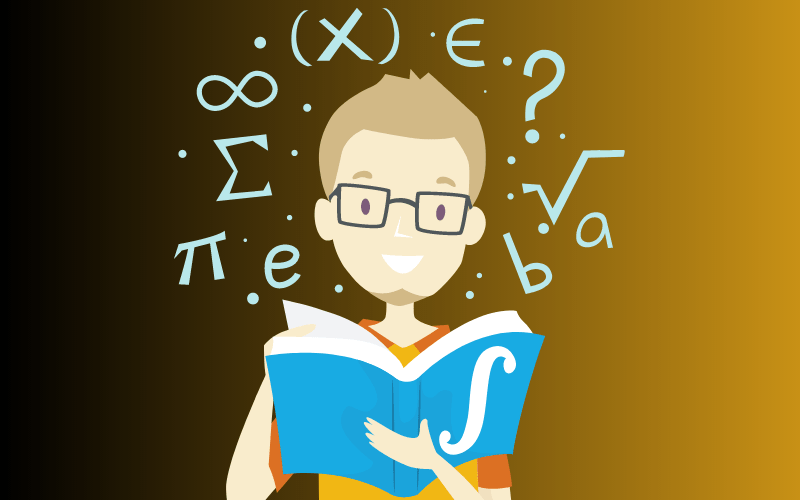
Calculus is a branch of mathematics that deals with the study of change, in the form of functions, rates of change, and integrals. It includes the study of derivatives, which are the rates of change of a function, and integrals, which are the sums of infinitely small pieces of a function. Calculus is used to solve problems in many fields, such as physics, engineering, economics, and medicine.
For trivia questions about calculus, continue on for calculus math trivia questions and answers.
Calculus Math Trivia Questions & Answers
68. Which fundamental tool of calculus is a function of a real variable that measures the sensitivity to change of the function value (output value) with respect to a change in its argument (input value)?
The Derivative
69. What kind of function is represented by ” ⌊x⌋ ” ?
A Floor Function
70. What is the mathematical notation that describes the limiting behavior of a function when the argument tends towards a particular value or infinity?
Big O Notation
71. What is the name of the identities, that are a set of three identities in vector calculus relating the bulk with the boundary of a region on which differential operators act?
Green’s Identities
72. What are the next three numbers of Euler’s number? 2.718_ _ _
281
73. In mathematics, what is a method for calculating a function that cannot be expressed by just elementary operators such as addition, subtraction, multiplication and division, with examples that include a Taylor series, a Maclaurin series, a Laurent series, a Dirichlet series, a Fourier series, and more?
A Series Expansion
74. In mathematics, what is the name of the periodic function composed of harmonically related sinusoids, combined by a weighted summation, and with appropriate weights, one cycle of the summation can be made to approximate an arbitrary function in that interval?
A Fourier Series
75. What kind of function is represented by ” ⌊x⌉ ” ?
A Nearest Integer Function
76. What does the set A ⊃ B mean?
A is a Strict Superset of B
77. What is the value of a function that must be provided to obtain the function’s result called?
An Argument or an Indépendant Variable
78. What kind of function is represented by ⌈x⌉ ?
A Ceiling Function or Ceil
79. What is a binary relation between two sets that associates to each element of the first set exactly one element of the second set called?
A Function
80. What is a set endowed with some additional features on the set, such as an operation, relation, metric, or topology, where often, the additional features are attached or related to the set, so as to provide it with some additional meaning or significance called?
A Mathematical Structure
81. In mathematics, what is a value of a continuous quantity that can represent a distance along a line or alternatively, a quantity that can be represented as an infinite decimal expansion called?
A Real Number
82. What is the name of the operator used often in vector calculus as a vector differential operator, that when applied to a function defined on a one-dimensional domain, denotes the standard derivative of the function as defined in calculus?
Del or Nabla
83. In Mathematics, what assigns numbers to functions in a way that describes displacement, area, volume, and other concepts that arise by combining infinitesimal data?
An Integral
200+ American History Trivia Questions & Answers
Fascinating American History trivia facts covering a variety of topics. Click the play now button to begin.
Geometry Math Trivia
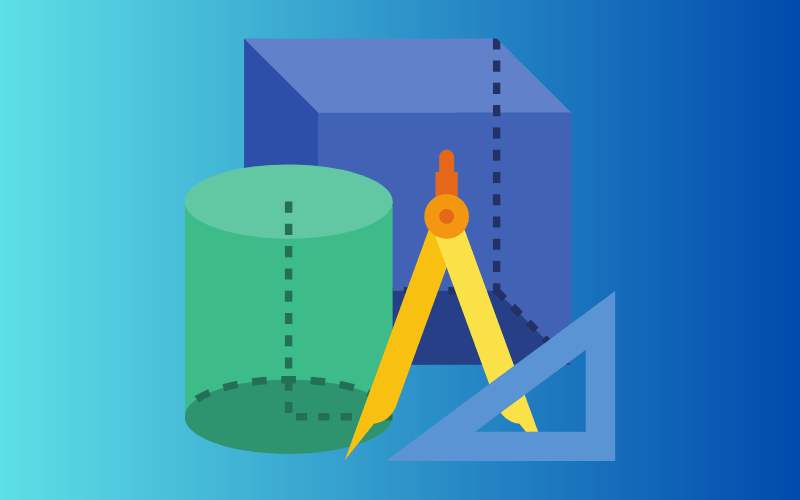
Geometry is a branch of mathematics that deals with shapes, sizes, and relative positions of figures and the properties of space. It includes the study of points, lines, angles, surfaces, and solids. Geometry also deals with measurement and analysis of two- and three-dimensional shapes and figures. It has been used in many areas, including architecture, engineering, astronomy, physics, and navigation.
For geometry trivia questions, read on for geometry math trivia questions and answers.
Geometry Math Trivia Questions & Answers
84. What is the name of the geometric formula that gives the area of a triangle when the length of all three sides are known, and there is no need to calculate angles or other distances in the triangle first?
Heron’s Formula
85. What is the name of the type of triangle where the three points of intersection of the adjacent angle trisectors form an equilateral triangle?
A Morley Triangle
86. When a triangle’s sides are a Pythagorean Triple, what kind of triangle is it?
A Right Angled Triangle
87. What is the π symbol called?
Pi
88. What was complex analysis traditionally known as?
The Theory of Functions of a Complex Variable
89. What does this formula find the sum of, where n is the number of terms, a1 is the first term and r is the common ratio? Sn=a1(1−rn)1−r,r≠1 Sn=a1(1−rn)1−r,r≠1
A Finite Geometric Series
90. What is the plane curve surrounding two focal points, such that for all points on the curve, the sum of the two distances to the focal points is a constant, and generalizes a circle?
An Ellipse
91. What does this formula represent? r=πr²
The Area of a Circle
92. In the hexagrammum mysticum theorem, if six arbitrary points are chosen on a conic and joined by line segments in any order to form a hexagon, then the three pairs of opposite sides of the hexagon meet at three points which lie on a straight line; what is the name of the line where the hexagon points meet?
The Pascal Line
93. In two-dimensional geometry, which postulate states that if a line segment intersects two straight lines forming two interior angles on the same side that sum to less than two right angles, then the two lines, if extended indefinitely, meet on that side on which the angles sum to less than two right angles?
The Parallel Postulate
94. What does this equation represent? r = aθ
The Spiral of Archimedes
95. The sum of the three angles of any triangle is equal to how many degrees?
180 Degrees
96. What is does this formula represent? 1 – ⅓ + ⅕ – ¹⁄₇ + ¹⁄₉ – ⋯ = π⁄₄
The Leibniz Formula for Pi
97. What is the ratio of a circle’s circumference to its diameter called?
Pi
98. What is this equation called? A² + B² = C²
The Pythagorean Equation
99. What is the type of smooth curve lying in a plane, defined by its geometric properties or by equations for which it is the solution set, with two pieces, called connected components or branches, that are mirror images of each other and resemble two infinite bows?
Hyperbola
100. What is the perimeter of a circle called?
The Circumference
101. What is the quantity that expresses the extent of a two-dimensional region, shape, or planar lamina, in the plane called?
The Area
102. In mathematics, what indicates how many times one number contains another?
A Ratio
103. What is the method of finding the area of a shape by inscribing inside it a sequence of polygons whose areas converge to the area of the containing shape called?
The Method of Exhaustion
104. What are the next three numbers of pi? 3.14_ _ _
159
105. What are two quantities in, if their ratio is the same as the ratio of their sum to the larger of the two quantities?
The Golden Ratio
106. What are the next three numbers in the golden ratio? 1.61_ _ _
803
107. What is the name of the mathematical curve that describes a smooth periodic oscillation in a continuous wave and occurs often in both pure and applied mathematics?
Sine Wave or Sinusoid
108. What is the mathematic study of points of algebraic varieties with coordinates in the integers, rational numbers, and their generalizations, which are typically fields that are not algebraically closed, such as number fields, finite fields, function fields, and p-adic fields?
Diophantine Geometry
Play Random Trivia Now!
Play random trivia questions from any of our many trivia categories. Click the play now button to begin.
Important Mathematicians in History Trivia

There have been many great contributions by influential mathematicians throughout history. These mathematical discoveries made by these mathematicians in geometry, trigonometry, calculus, set theory, and many more, have laid the critical foundations for modern mathematics. Without these contributions, we may not have had the type of advanced learning and technology of today.
For trivia on the most important mathematicians in history, keep reading for important mathematicians in history trivia questions and answers.
Important Mathematicians in History Trivia Questions & Answers
109. Who wrote the mathematical treatise Elements, which consists of 13 books and is a collection of definitions, postulates, propositions, and mathematical proofs of the propositions?
Euclid
110. Taylor’s theorem is named after which 18th century mathematician?
Brook Taylor
111. Who developed internal set theory, the mathematical theory of sets that provides an axiomatic basis for a portion of the nonstandard analysis introduced by Abraham Robinson?
Edward Nelson
112. Who are the finite group theory Sylow theorems named after?
Peter Ludwig Sylow
113. Who was the influential German mathematician that discovered and developed a broad range of fundamental ideas including invariant theory, the calculus of variations, commutative algebra, algebraic number theory, the foundations of geometry, spectral theory of operators and its application to integral equations, mathematical physics, and the foundations of mathematics, particularly in proof theory?
David Hilbert
114. Who introduced the axiomatic method, still used today?
Giuseppe Peano
115. Which Swiss mathematician initially introduced a theorem to Guillaume de l’Hôpital in 1694, that would later go on to become the L’Hôpital’s rule?
Johann Bernoulli
116. In additive number theory, who first made the observation on the theorem on sums of two squares, published in 1625?
Albert Girard
117. Who was the English mathematician, known for his achievements in number theory, mathematical analysis, the Hardy–Weinberg principle in biology, and his 1940 essay, A Mathematician’s Apology?
G. H. Hardy
118. What is the name of the historically notable problem in mathematics, where the problem was to devise a walk through of a Russian city, where the walker would only cross each of two bridges between two islands once?
The Seven Bridges of Königsberg
119. Who was the Swiss mathematician that made important and influential discoveries in many branches of mathematics, such as calculus, graph theory, and analytic number theory, while also introducing much of the modern mathematical terminology and notation?
Leonhard Euler
120. In the foundations of mathematics, what is the term that came from a famous British polymath and mathematician showing that some attempted formalizations of the naive set theory created by Georg Cantor led to a contradiction?
Russell’s Paradox
121. Who was the Persian polymath who produced vastly influential works in mathematics, astronomy, and geography and wrote the treatise on algebra, The Compendious Book on Calculation by Completion and Balancing?
Muḥammad ibn Mūsā al-Khwārizmī
122. Who was the Italian mathematician and glottologist that authored over 200 books and papers, and was a founder of mathematical logic and set theory?
Giuseppe Peano
123. Who proved the polyhedron formula?
Leonhard Euler
124. Who is de Moivre’s formula named after?
Abraham de Moivre
125. Who first presented the form of the theorem, which later became Green’s theorem?
Augustin-Louis Cauchy
126. Who was the Dutch mathematician and philosopher that established himself as the founder of modern topology, with his fixed-point theorem and the topological invariance of dimension?
L. E. J. Brouwer
127. Who was the Persian mathematician who has been credited with proposing the idea of a function and also developed a novel method for determining the conditions under which certain types of cubic equations would have two, one, or no solutions?
Sharaf al-Din al-Tusi
128. In mathematics, what is the name of the technique for getting information on the number of positive real roots of a polynomial, which asserts that the number of positive roots is at most the number of sign changes in the sequence of polynomial’s coefficients, and that the difference between these two numbers is always even?
Descartes’ Rule of Signs
129. Which ancient Greek philosopher are Platonic solids named after?
Plato
130. What German mathematician and physicist, who made significant contributions to a number fields in mathematics and science said, “Mathematics is the queen of the sciences—and number theory is the queen of mathematics”?
Carl Friedrich Gauss
131. Who posed the 18th century question about knowing the probability that a dropped needle on a parallel strip wood floor will lie across a line between two strips?
Georges-Louis Leclerc
132. Who was the German-Austrian logician and mathematician, who published two incompleteness theorems in 1931, that demonstrated the inherent limitations of every formal axiomatic system capable of modeling basic arithmetic?
Kurt Gödel
133. Who was the Persian polymath and mathematician whose most notable work was on the classification and solution of cubic equations, where he provided geometric solutions by the intersection of conics and contributed to the understanding of the parallel axiom?
Omar Khayyam
134. Which two mathematicians independently developed calculus in the late 17th century?
Isaac Newton and Gottfried Wilhelm Leibniz
135. Who solved the Basel problem, first posed by Pietro Mengoli in 1650?
Leonhard Euler
136. Who proved that the sum of the reciprocals of all prime numbers diverges?
Leonhard Euler
137. Which ancient Greek mathematician is considered to be one of the greatest of all time, with achievements that include deriving an accurate approximation of pi; defining and investigating the spiral that now bears his name; and creating a system using exponentiation for expressing very large numbers?
Archimedes
Math Fun Facts Trivia

Math fun facts come from educational resources such as history, applications, and other interesting tidbits. These math fun facts provide an entertaining way to engage with math and encourage learning through trivia and discovery. They were written for the true math enthusiasts in mind.
If you truly enjoy math, read on for math fun facts trivia questions and answers.
Math Fun Facts Trivia Questions & Answers
138. What term denotes the mathematics developed or practiced by the people of Mesopotamia?
Babylonian Mathematics
139. Which numeral system and the rules for the use of its operations, are still in use almost exclusively throughout the world today?
Hindu–Arabic Numeral System
140. What is the name of the journal published by the American Mathematical Society that contains brief synopses, and in some cases evaluations, of many articles in mathematics, statistics, and theoretical computer science?
Mathematical Reviews
141. What is the title of the book of mathematical proofs by Martin Aigner and Günter M. Ziegler, which contains 45 sections in the sixth edition, each devoted to one theorem but often containing multiple proofs and related results?
Proofs from THE BOOK
142. What is the only even prime number?
2
143. Which ancient language is the term “geometry” derived from?
Greek
144. What is the colloquial term for a number that can be written without a fractional component?
An Integer
145. Which ancient language is the term “equal” derived from?
Latin
146. Which ancient language is the term “algebra” derived from?
Arabic
147. In which ancient cultures did elementary arithmetic such as addition, subtraction, multiplication and division first appear, according to archaeological record?
Babylon and Egypt
148. What is the name of the professional society, founded in 1915, that focuses on mathematics accessible at the undergraduate level, with 25,000+ members, spanning university, college, and high school teachers; graduate and undergraduate students; pure and applied mathematicians; computer scientists; statisticians; and many others in academia, government, business, and industry professionals?
The Mathematical Association of America or MAA
149. What is the name of the widely read expository mathematical journal founded by Benjamin Finkel in 1894, published ten times each year by Taylor & Francis ,for the Mathematical Association of America?
The American Mathematical Monthly
150. What does the acronym MSC, which is an alphanumeric classification scheme collaboratively produced from two major mathematical reviewing databases, stand for?
Mathematics Subject Classification
151. What is the numeral system with sixty as its base, that originated with the ancient Sumerians in the 3rd millennium BC and was passed down to the ancient Babylonians, still used in a modified form for measuring time, angles, and geographic coordinates today?
Sexagesimal
152. What is the smallest perfect number?
6
153. Which ancient language is the term “math” derived from?
Greek
154. What is the name of the association of professional mathematicians dedicated to the interests of mathematical research and scholarship, and serves the national and international community through its publications, meetings, advocacy and other programs, which goes by the acronym AMS?
American Mathematical Society
155. What is the name of the major international reviewing service that provides reviews and abstracts for articles in pure and applied mathematics, produced by the Berlin office of FIZ Karlsruhe?
zbMATH or Zentralblatt MATH
Math Symbols Trivia
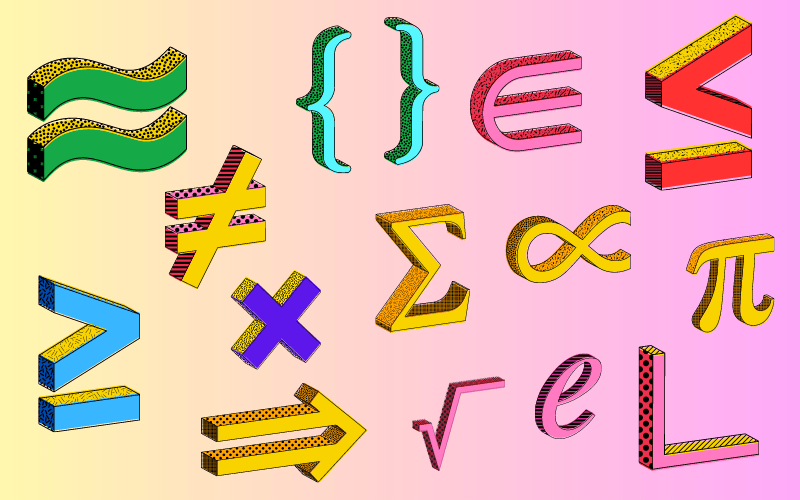
Math symbols are used to represent mathematical entities such as numbers, operations, functions, and equations. There are the more common symbols used in mathematics such as the plus sign, minus sign, multiplication sign, division sign and so forth. But the more advanced symbols are less common and not so easy to recognize. These symbols are used to denote various operations, functions, and equations in mathematical equations, formulas, and expressions.
Read on for challenging math symbols trivia questions and answers.
Math Symbols Trivia Questions & Answers
156. In algebraic geometry, what is the ” ∞ ” symbol called?
A Lemniscate
157. What does the ” ∃ ” symbol read as in basic logic?
“There Exists”
158. What does the ” ∑ ” symbol denote of a finite number of terms, in linear and multilinear algebra?
The Sum
159. What does the ” ∀ ” symbol read as in basic logic?
For All
160. What does the ” ∥ ” symbol denote in elementary geometry?
Parallelism
161. What does the ” : ” symbol denote of two quantities?
The Ratio
162. What is the ” ∆ ” symbol called in calculus?
The Laplace Operator or a Laplacian
163. What does the ” ⊻ ” symbol denote in basic logic?
The Exclusive Or
164. What does the ” ∏ ” symbol denote of a finite number of terms, in linear and multilinear algebra?
The Product
165. What does the blackboard bold ” ℝ ” symbol denote a set of?
Real Numbers
166. What operation does the ” ! ” symbol denote?
A Factorial Operation
167. In set theory, what is the ” ℵ ” symbol called?
An Aleph
168. What does the ” ≡ ” symbol mean in math?
Identical To
169. What does the symbol ” e ” represent in math?
Euler’s Number
170. What does the ” ∈ ” symbol mean in set theory?
Is an Element of
171. What does the ” √ ” symbol denote?
The Square Root
172. What does the ” < ” symbol mean in mathematics?
Less Than
173. What does the ” ∨ ” symbol read as in basic logic?
“Or”
174. What does the blackboard bold ” ℚ ” symbol denote a set of?
Rational Numbers
175. In number theory, what does the ” # ” symbol denote?
A Primorial
176. What does the logical predicate “⊥” symbol denote?
Always False
177. What does the ” ≤ ” symbol mean in mathematics?
Less Than or Equal To
178. What does the ” ≠ ” symbol mean?
Not Equal
179. What does the ” > ” symbol in mathematics mean?
Greater Than
180. What does the ” ≥ ” symbol mean?
Greater Than or Equal To
181. What is the ” ∘ ” symbol called in algebraic operations?
The Composition Operator
182. What does the blackboard bold ” ℤ ” symbol denote a set of?
Integers
183. What does the blackboard bold ” ℕ ” symbol denote a set of?
Natural Numbers
184. What is the ” ∇ ” symbol called in calculus?
A Del or Nabla
185. What does the ø symbol denote in set theory?
An Empty Set
186. What does the logical predicate ” ⊤ ” symbol denote?
Always True
187. What is this ” ∫ ” symbol called?
The Integral Symbol
188. In set theory, the what is the ” ℶ ” symbol called?
A Beth
189. What does the ” Φ ” symbol represent?
The Golden Ratio
190. What does the abbreviation ” ∋ ” mean?
“Such that” or “Under the Condition that“
191. What does the ” ¬ ” symbol read as in basic logic?
“Not“
192. In x^y, what would the ” ^ ” symbol denote?
Exponentiation
193. What does the ” ∥ ” symbol denote in elementary geometry?
Parallelism
194. What does ” Ω ” symbol mean in math?
The Unit for Resistance or Ohms
195. What does the ” ∖ ” symbol denote in set theory?
The Set Difference
196. What does the ” ∪ ” symbol denote in set theory?
A Set Theoretic Union
197. What does the ” ∤ symbol denote?
Non-divisibility
198. What does the ” ∉ ” symbol mean in set theory?
Not In
199. What does the ” ≈ ” symbol mean?
Approximately Equal To
Theorems of Math Trivia
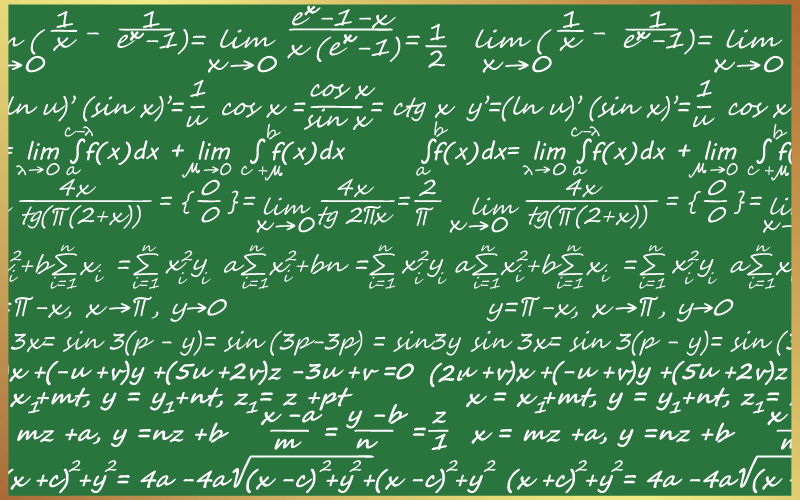
Math theorems are statements that have been proven to be true through mathematical proofs. There are many important math theorems that have contributed to the foundations of modern day math. These advanced concepts proved to be critical to the evolution of mathematics, computations, and current technologies.
For the critical theorems of math, continue reading for theorems of math trivia questions and answers.
Theorems Math Trivia Questions & Answers
200. Which theorem states that for any continuous function ƒ mapping a compact convex set to itself there is a point x₀ such that ƒ( x₀ ) = x₀ ?
The Brouwer Fixed-point Theorem
201. In probability theory, which theorem says that, under certain conditions, the expected value of a martingale at a stopping time is equal to its initial expected value?
The Optional Stopping Theorem
202. Which theory of probability theorem describes the result of performing the same experiment a large number of times and according to the law, the average of the results obtained from a large number of trials should be close to the expected value and will tend to become closer to the expected value as more trials are performed?
The Law of Large Numbers
203. Which theorem states that if a₁, …, an are algebraic numbers that are linearly independent over the rational numbers ℚ, then eª₁, …, eªn are algebraically independent over ℚ?
Lindemann–Weierstrass Theorem
204. Which theorem of set theory states that the cardinality of a set is strictly less than the cardinality of its power set, or collection of subsets?
Cantor’s Theorem
205. What are the two theorems of mathematical logic that demonstrate the inherent limitations of every formal axiomatic system capable of modeling basic arithmetic?
Gödel’s Incompleteness Theorems
206. Which theorem states that in general, the number of common zeros equals the product of the degrees of the polynomials?
Bezout’s Theorem
207. Which proposition states that the nine-point circle of any triangle is tangent internally to the incircle and tangent externally to the three excircles?
Feuerbach’s Theorem
208. Which theorem proves there are infinitely many primes?
Euclid’s Theorem
209. What does the blackboard bold ” ℂ ” symbol represent a set of?
Complex Numbers
210. Which theorem states, given r, s, any sequence of distinct real numbers with length at least (r − 1)(s − 1) + 1 contains a monotonically increasing subsequence of length r or a monotonically decreasing subsequence of length s?
Erdős-Szekeres Theorem
211. Which theorem of projective geometry states that two triangles are in perspective axially if and only if they are in perspective centrally?
Desargues’s Theorem
212. What is the theorem of real analysis, which states that for almost every point, the value of an integrable function is the limit of infinitesimal averages taken about the point?
The Lebesgue Differentiation Theorem
213. Which theorem of plane geometry states that in any triangle, the three points of intersection of the adjacent angle trisectors form an equilateral triangle?
Morley’s Trisector Theorem
214. In number theory, what is the theorem that is about modular arithmetic that gives conditions for the solvability of quadratic equations modulo prime numbers?
The Law of Quadratic Reciprocity
215. What is the name of the mathematics formula that is an approximation for factorials, which is a good approximation, leading to accurate results even for small values of n?
Stirling’s Formula or Stirling’s Approximation
216. Which theorem states that if p is a prime number, then for any integer a, the number ap − a is an integer multiple of p?
Fermat’s Little Theorem
217. Which theorem states that if two sides of a triangle are congruent, then angles opposite to those sides are congruent?
The Isosceles Triangle Theorem
218. Which theorem is a hypothesis about the possible sizes of infinite sets and states, there is no set whose cardinality is strictly between that of the integers and the real numbers?
The Continuum Hypothesis
219. What is the name of the explicit formula in linear algebra, which is the explicit formula for the solution of a system of linear equations with as many equations as unknowns, valid whenever the system has a unique solution, and expresses the solution in terms of the determinants of the coefficient matrix and of matrices obtained from it by replacing one column by the column vector of right-hand-sides of the equations?
Cramer’s Rule
220. Which theorem states that the sum of the lengths of any two sides of a triangle is greater than the length of the third side?
The Triangle Inequality Theorem
221. Which theorem states that every natural number can be represented as the sum of four integer squares?
Lagrange’s Four-square Theorem
222. Which theorem states that if a function f is continuous on the closed interval [a,b] and differentiable on the open interval (a,b), then there exists a point c in the interval (a,b) such that f'(c) is equal to the function’s average rate of change over [a,b] ?
Mean Value Theorem
223. What is the name of the theorem that is an efficient method for computing the greatest common divisor of two integers, the largest number that divides them both without a remainder, and is named after an ancient Greek mathematician, who first described it in his book Elements?
The Euclidean Algorithm
224. Which theorem links the concept of differentiating a function with the concept of integrating a function?
Fundamental Theorem of Calculus
225. Which theorem states that, in a party of n persons, if every pair of persons has exactly one common friend, then there is someone in the party who is everyone else’s friend?
The Friendship Theorem
226. What does the ” ∩ ” symbol denote in set theory?
A Set Theoretic Intersection
227. Which theorem states that when a polynomial, f(x), is divided by a linear polynomial , x – a, the remainder of that division will be equivalent to f(a)?
The Remainder Theorem
228. Which theorem states that a polynomial ƒ(x) has a factor (x − k) if and only if ƒ(k) = 0 ?
The Factor Theorem
229. In combinatorics, what problem is this the answer to? (p − q) ⁄ (p + q)
Bertrand’s Ballot Problem
230. What is the name of the equation, which is any Diophantine equation of the form x² − ny² = 1 where n is a given positive non-square integer and integer solutions are sought for x and y?
Pell’s Equation
231. Which theorem states that there is no solution in radicals to general polynomial equations of degree five or higher with arbitrary coefficients?
The Abel–Ruffini Theorem
232. Which theorem describes the algebraic expansion of powers of a binomial where, it is possible to expand the polynomial (x + y)n into a sum involving terms of the form axbyc, where the exponents b and c are non-negative integers with b + c = n, and the coefficient a of each term is a specific positive integer depending on n and b?
The Binomial Theorem
233. Which theorem states that every non-zero, single-variable, degree n polynomial with complex coefficients has, counted with multiplicity, exactly n complex roots?
The Fundamental Theorem of Algebra
234. Which theorem states that, if ƒ (x, y) is an analytic germ in two variables, then the solutions y = φ (x) of the equation ƒ = 0 can be expanded as Puiseux series that are convergent in a neighborhood of the origin?
The Newton-Puiseux Theorem
235. Which theorem of probability establishes that in many situations, when independent random variables are added, their properly normalized sum tends toward a normal distribution even if the original variables themselves are not normally distributed?
The Central Limit Theorem
236. Which theorem states that, given any separation of a plane into contiguous regions when producing a map, no more than four colors are required to color the regions of the map so that no two adjacent regions have the same color?
The Four Color Theorem
237. Which theorem describes the asymptotic distribution of the prime numbers among the positive integers, that formalizes the idea that primes become less common as they become larger by precisely quantifying the rate at which this occurs?
The Prime Number Theorem
238. What is the fundamental relation in Euclidean geometry among the three sides of a right triangle which states that the area of the square whose side is the hypotenuse is equal to the sum of the areas of the squares on the other two sides called?
The Pythagorean Theorem
239. Which theorem states that there are infinitely many prime numbers contained in the collection of all numbers of the form na + b, in which the constants a and b are integers that have no common divisors except the number 1 and the variable n is any natural number?
Dirichlet’s Theorem
240. Which theorem states that if f is a continuous function whose domain contains the interval [a, b], then it takes on any given value between f(a) and f(b) at some point within the interval?
The Intermediate Value Theorem
241. Which theorem is the statement that every convex set in ℝⁿ which is symmetric with respect to the origin and which has volume greater than 2ⁿ contains a non-zero integer point?
Minkowski’s Theorem
242. Which theorem of linear algebra states that every square matrix over a commutative ring satisfies its own characteristic equation?
The Cayley–Hamilton Theorem
243. Which theorem states that every integer >1 has a prime factorization and that prime factorization is unique?
The Fundamental Theorem of Arithmetic
244. In Euclidean geometry, which theorem is a relation between the four sides and two diagonals of a cyclic quadrilateral, which is a quadrilateral whose vertices lie on a common circle?
Ptolemy’s Theorem
245. Which theorem states that a natural number n > 1 is a prime number if and only if the product of all the positive integers less than n is one less than a multiple of n?
Wilson’s Theorem
246. Which theorem was the first major theorem to be proved using a computer?
The Four Color Theorem
247. In number theory, what is the theorem that states that for any integer n > 3, there always exists at least one prime number p with n < p < 2n – 2 ?
Bertrand’s Postulate
248. Which theorem in combinatorics both follows from and ultimately generalizes Burnside’s lemma on the number of orbits of a group action on a set?
The Pólya Enumeration Theorem
249. Which theorem of set theory states that, if there exist injective functions f : A → B and g : B → A between the sets A and B, then there exists a bijective function h : A → B?
Schröder–Bernstein Theorem
250. Which theorem represented by this formula? A = i + ᵇ⁄₂ − 1
Pick’s Theorem
251. Which theorem is a statement in elementary geometry that describes a relation of the four line segments created by two intersecting chords within a circle and states that the products of the lengths of the line segments on each chord are equal?
Intersecting Chords Theorem
Recent Posts
Step into a realm of nostalgia as we embark on a journey through the annals of pop culture and bid farewell to 35 recently obsolete technologies. In the ever-evolving landscape of innovation, certain...
